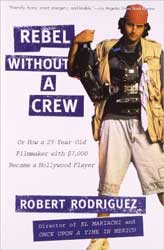The height of the camera in comparison to the subject has a huge affect on the viewer. Think about what you are trying to convey to your audience. Do you want them to feel dominant over a character? Do you want them to have pity on someone? Lets say you are building your character, and you want them to finally feel equal to another character, working on your camera height can help you achieve any of these situations.
Here are the different camera heights and the affects they can have on your viewer. Keep in mind, lots of these terms can have relative meanings and feelings, so be aware at how you can use them to help tell your story.
Birds Eye – This angle is done from a really elevated position. Also called Overhead view, bird’s eye view can be an aerial shot, or almost looking from directly above a subject. Imagine you were a bird flying far above your subject, this is about what you would end up seeing.
High Angle – Shooting from a higher angle looking down at your subject. With this angle, you can take away any power that your subject may have. Think of it as actually looking down on someone. If you wanted your audience to have pity on a character, this could be a very reasonable angle to use. There are varying degrees of high angles, this can be subtle or very apparent. Distance from your subject also will have an affect on your angle, but we can talk more about that later.
Eye Level – I probably would say to use this as your standard shot. But again, every angle should have a purpose, so be aware of the feelings they convey and use them wisely. This angle puts the viewer and the subject on equal footing. At Eye Level, no one is looking down or looking up at anyone. I like shooting Interviews and Portraits at eye level, because, it gives a neutrality to the image, and lets you build from there. A standard eye level is about 5 and a half feet, but the eye level of a short person, or a really tall person vary, so again, lots of these are relative terms.
Low Angle – This angle gives the subject power! Imagine yourself, standing in front of a body builder looking up at them, shooting someone from a low angle makes the subject look like they could be towering over you. Because you are giving your subject power or taking it away, you are able to choose who and when to shoot in these angles.
Worms Eye – This is an exaggerated low angle. Rather than a bird flying overhead, this would be the worm crawling on the ground. Everything towers above this angle. So shooting something from worms eye view looks like a giant.
Dutch Tilt/Canted Angle – Camera Height isn’t as important as is the tilting or rotating of the actual camera itself. The Canted Angle or the Dutch Tilt as its commonly known as, puts the camera on a tilt as if you were tilting your head to the side. It’s rotated enough so that the vertical lines are now angled and the horizon is no longer parallel to the bottom of the frame. This angle really is meant to distort your view. You can use it to add a feeling of chaos or mental anguish (physiological uneasiness).
These angles work, whether you are shooting a 3 foot tall toddler from a low angle they will feel like a towering giant, or the other way around and shoot a 7 foot tall man from a high angle removes his power and he looks little and helpless. So now that you know what these angles can do, use them to your advantage. Experiment with them and see how you react to the visuals you create.




